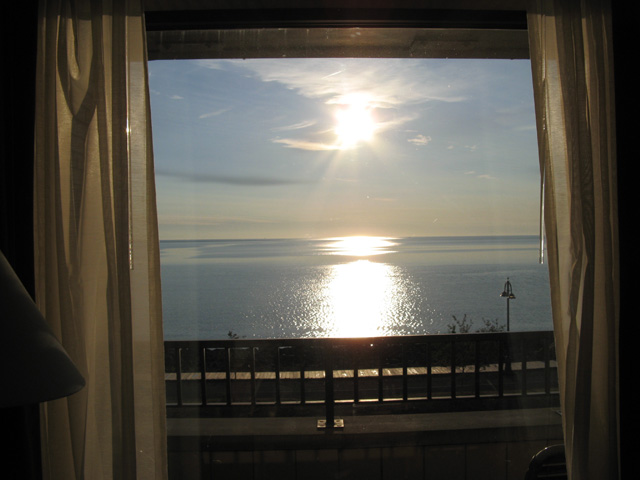
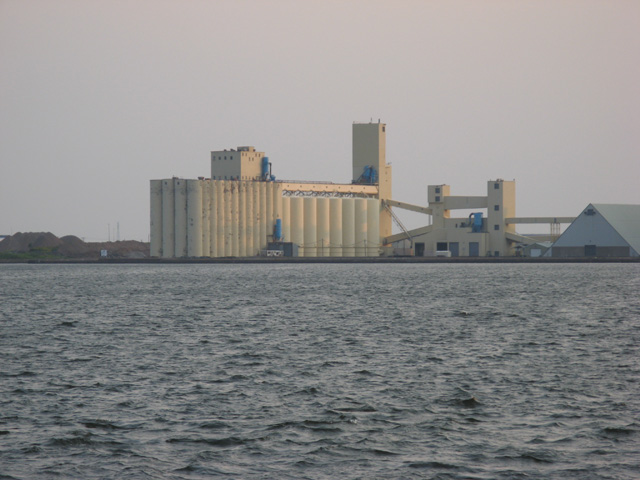
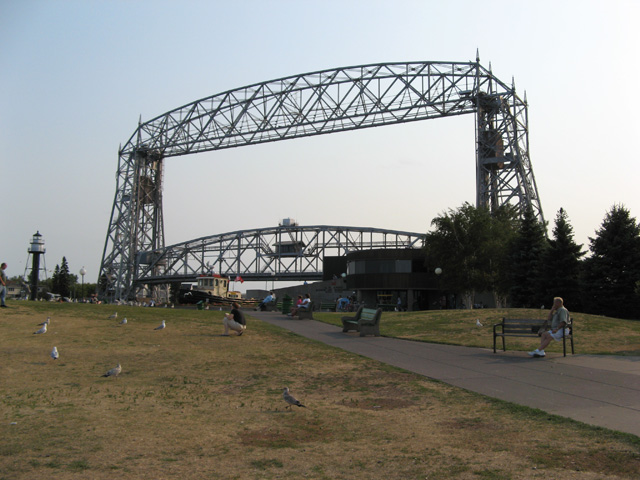

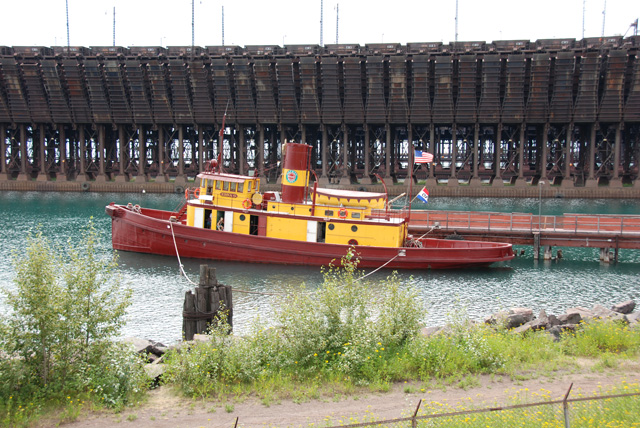
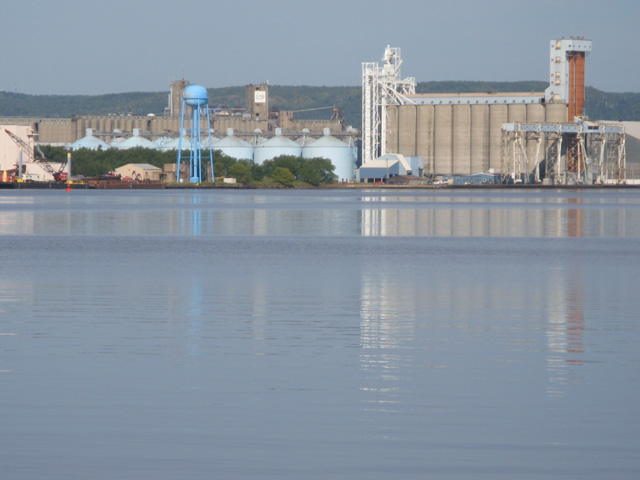
 |
In the lastfew issues of Model Railroader magazine there has been several articles about the fun to be had in modelling short-line railroads. A short-line railroad which has been an important player in the American economy for over a century is the Duluth, Missabe, & Iron Range Railroad. It is of interest to model railroaders in that: it is one of the last lines to give up steam in the US; while mainly an ore carrier, it also was in the passenger business and tbe pulpwood business; it had its own navy (OK, OK, its just one tugboat, but its a photogenic one); the pit mines are gigantic; the ore docks at its Duluth and Two Harbor termini are impressive and massive structures; entrance to its busy harbor from Gitche Gumee (Lake Superior, in case you didn't learn Longfellow in school) is through a spectacular lift bridge. |  |
 |
 |
|
 |
 |
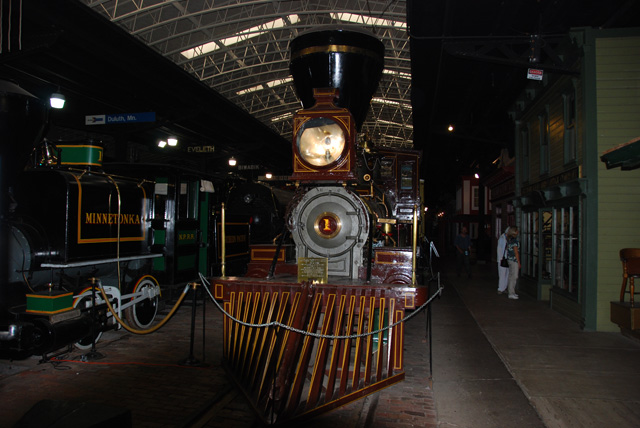 |
The Duluth, Missabe, & Iron Range Railroad (DMIR) was formed in 1937 by the consolidation of the Duluth & Iron Range Railroad, the Duluth, Missabe, & Northern Railroad, and the Spirit Lake Transfer Railroad. These were all the outgrowths of competing railroads formed as early as 1881 for the purpose of bringing iron ore from the Mesabe Range in northern Minnesota. (No, I don't have trouble spelling Missabe and Mesabe. They are US spellings of a French version of an Indian name. There are other variants as well. The US government prefers Mesabe, while the Minnesotans have at least 3 spelling variants.) In the beginning, the iron ore mined was quite pure, yielding 62% iron. Ore cars were built 24 feet long, the pits in the dock (originally wood, now steel) were spaced 24 feet, and so were the cargo holds in the ships. Since there was some variation in the quality of the ore from place to place, the ore cars carried identification as to the quality of their cargo, and dumped their load in particular dock pits, depending on whether the particular purity was sought, or whether it was desired to make the quality of the ore more uniform. This led to intricate automatic tracking of ore cars, long before the now-standard tracking methods were introduced. Later, as the higher quality ore disappeared, a lower-bearing ore called taconite was pre-processed near the mine. Taconite is harder than the higher yielding ore and is very abrasive. Pre-processing near the mines reduced the ore to baseball-sized spheres or long cylinders, making operations easier for the railroad. Building the railroads meant crossing swamps (Minnesota, the land of 10,000 lakes, has even more swamps) and dealing with steep grades. There is a 600 foot escarpment at Duluth which necessitated loops to reduce the grade to 2.2%, which was still a struggle for the unloaded train to return to the mines. Even though the total trackage was of the order of only 200 miles, heavy engines were needed. In the steam days, Baldwin, Alco, Brooks an Lima all provided engines such as switchers (0-8-0, 0-10-0), Consolidations (2-8-0) and Mikados (2-8-2) for road service, and Pacifics (4-6-2) for passenger service. After World War I, increased tonnage lead to the introduction of the Santa Fe class (2-10-2) which allowed train length to be increased to 135 cars, compared with 65 for the Consolidation. Articulated Mallets (2-8-8-2) were introduced as early as 1910. Around 1949 articulated Yellowstones (2-8-8-4) were added to the fleet. These engines had more traction than UPs Big Boys, and required the installation of heavier rail and a longer (128 foot) turntable. During the 1950s, while most railroads were discarding their steamers, DMIR was buying up the discards and increasing their steam fleet. While deisels had their advantages, the steam came in handy for thawing loads of frozen iron ore. |
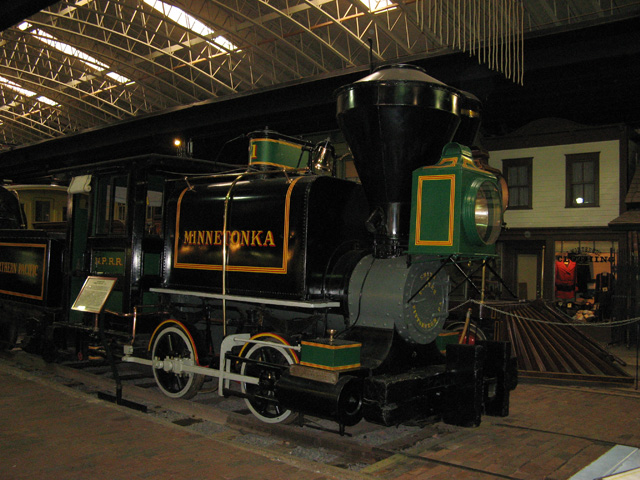 |
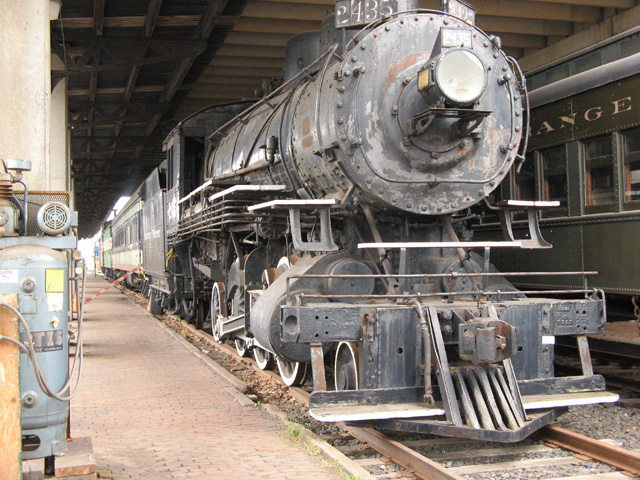 |
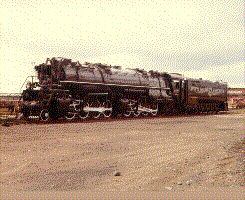 |
|
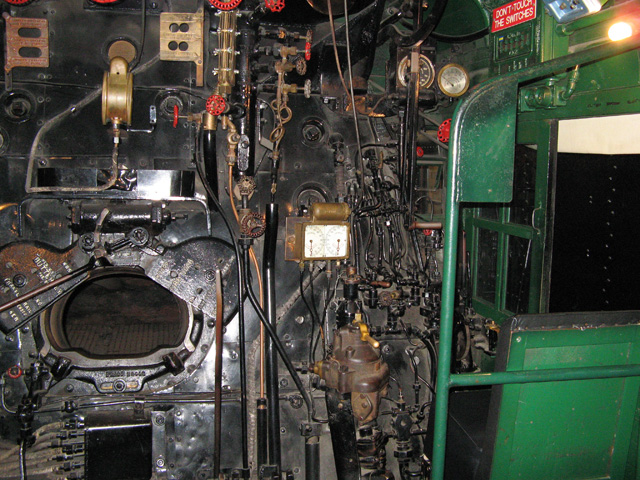 |
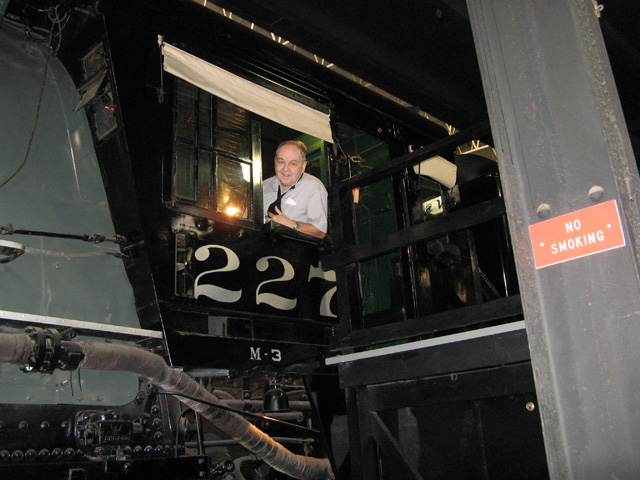 |
|
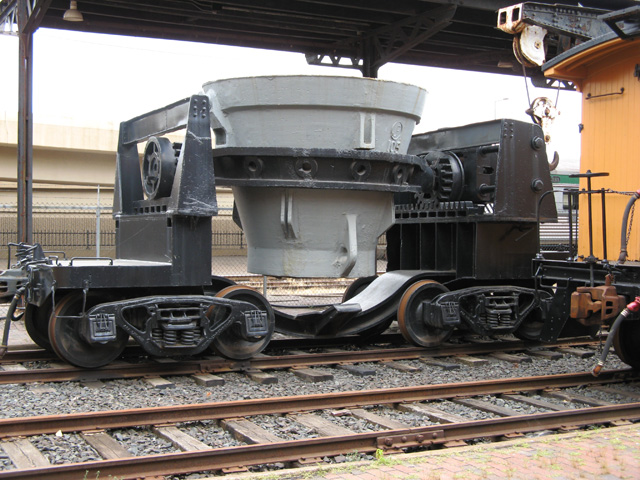 |
||
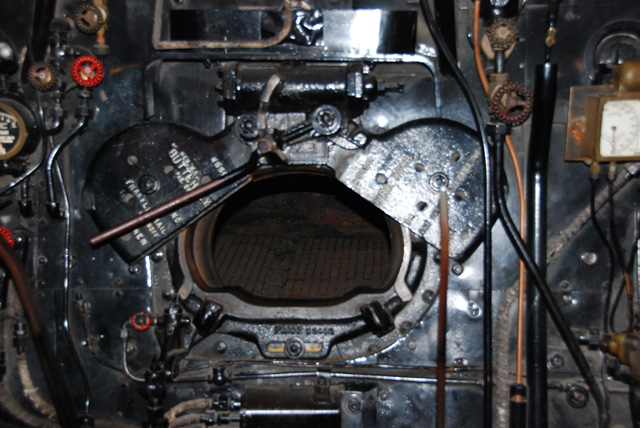 |
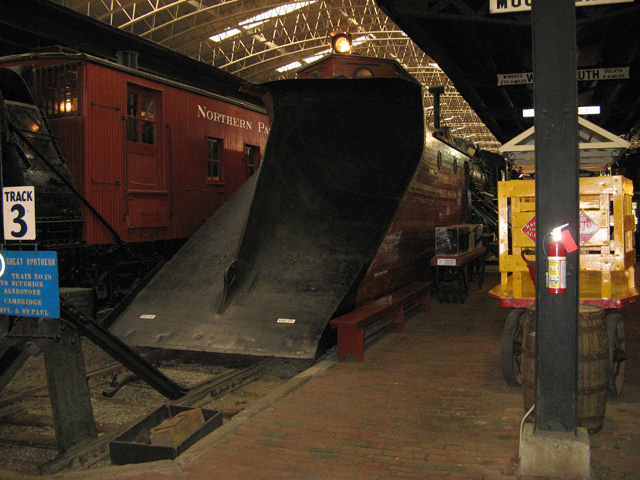 |
|
 |
||
 |
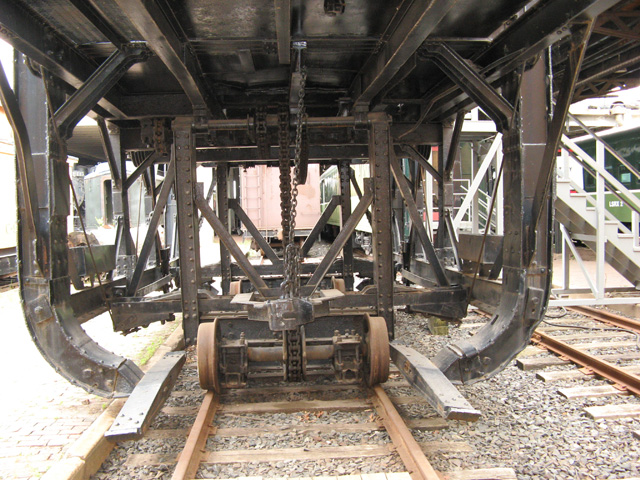 |
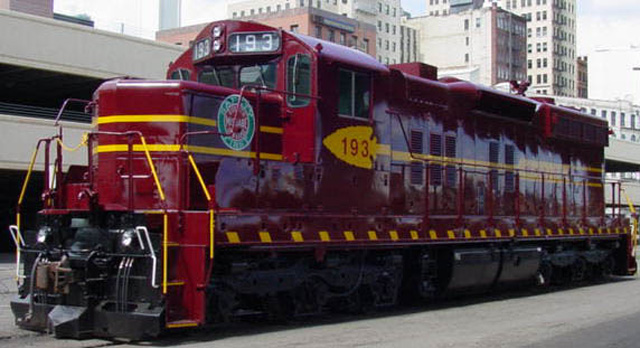 |
The DMIR's shift to deisels finally took place in the 1960's, the fleet consisted of SD9s, SD18s, SD38w, FTs, F7s, F9s, and GP7s. The base color of the engines was maroon with a gold arrow, maroon and gold being the colors of the University of Minnesota, which contributed needed research to the development of the taconite processing. Again, many of the engines were purchased from other lines, and repainting was not necessarily in the cards. | 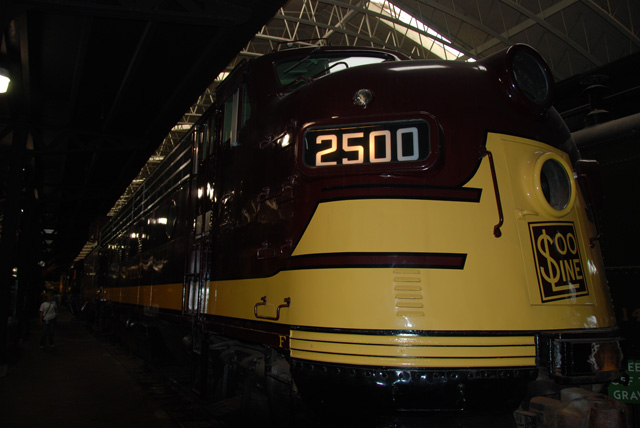 |
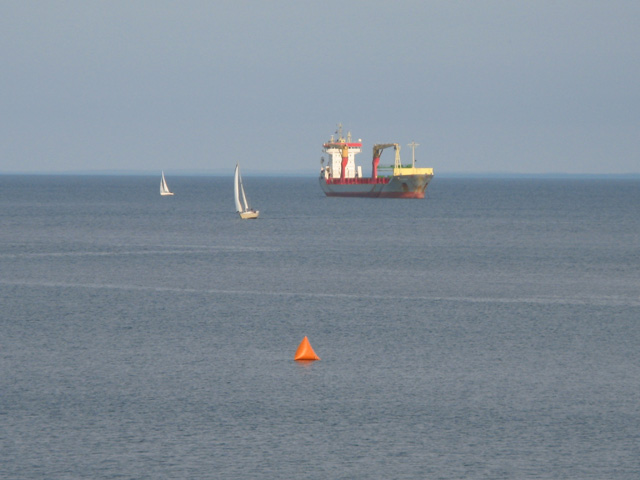 |
Today the steel business is not as dominant an economic force in the US as it once was. Now the Canadian National owns the DMIR, and railroad and oreboat traffic has been reduced. The presence of the DMIR is still to be seen in Duluth and Two Harbors, a small town about 40 miles northeast of Duluth. Container and ore ships still enter the beautiful and immense harbor through a spectacular lift bridge. Ore docks dot the harbor, and grain silo sites abound. The railroad museum is in an old (1892) C&NW depot with two witches hat turrets, and the museum fleet boasts an F9, a Yellowstone, passenger cars and caboose, a Russell snowplow with an interior much like a cupola caboose, a rotary snowplow, wrecker crane, and the darndest self-propelled log-loading car I've ever seen. Tourist trains depart regularly from the museum to Two Harbors, and there is an elaborate HO model of the Duluth area in what appears to be an old railroad station inside the museum. Other to-be-restored cars include a double-deck C&NW commuter passenger car of the 1950s. |  |
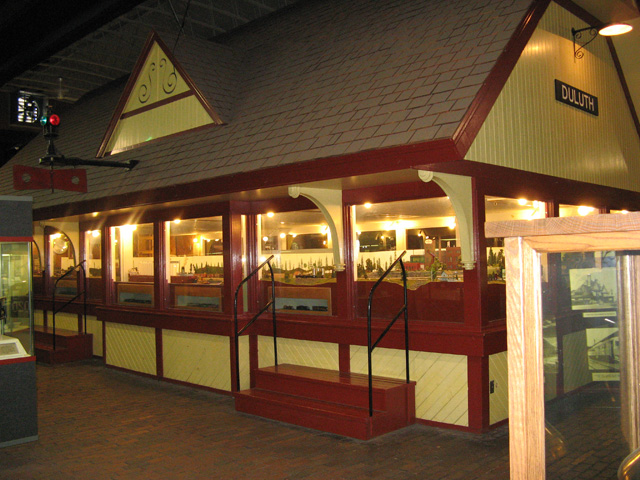 |
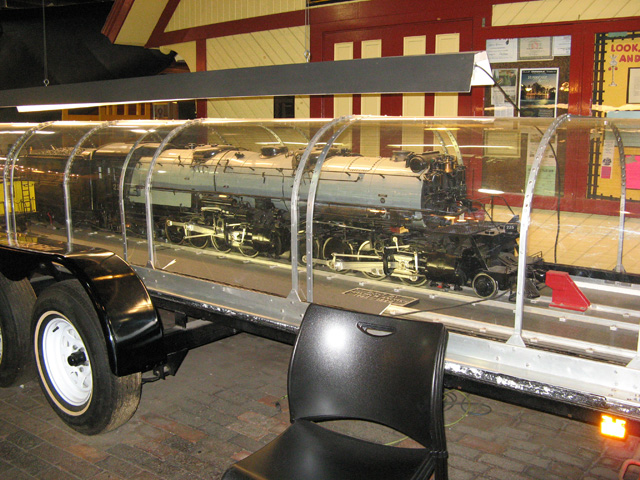 |
|
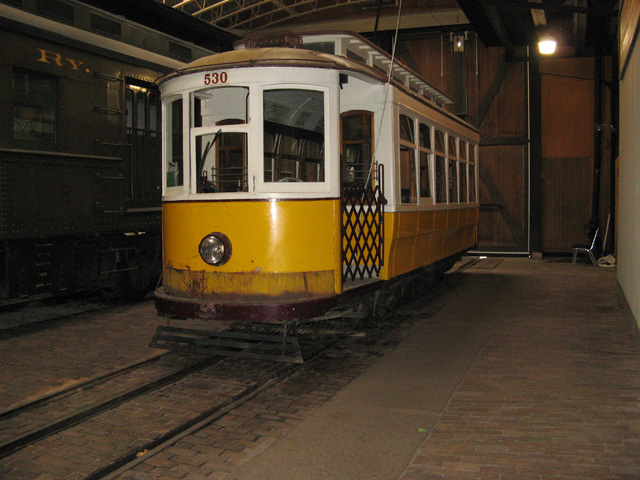 |
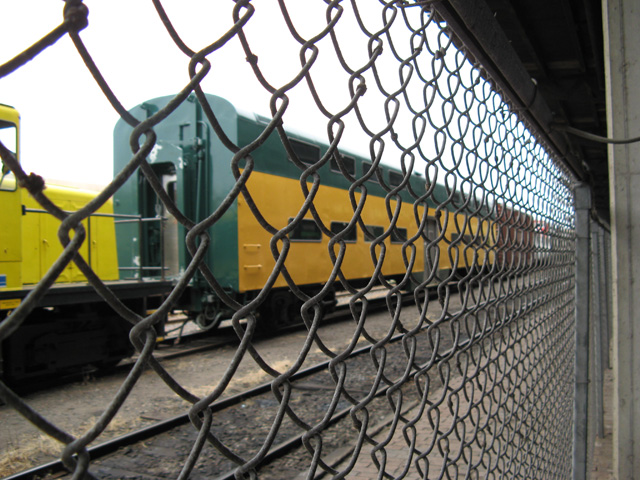 |
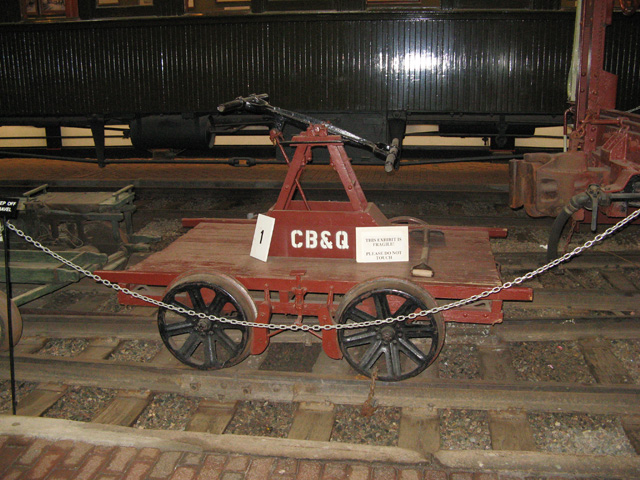 |
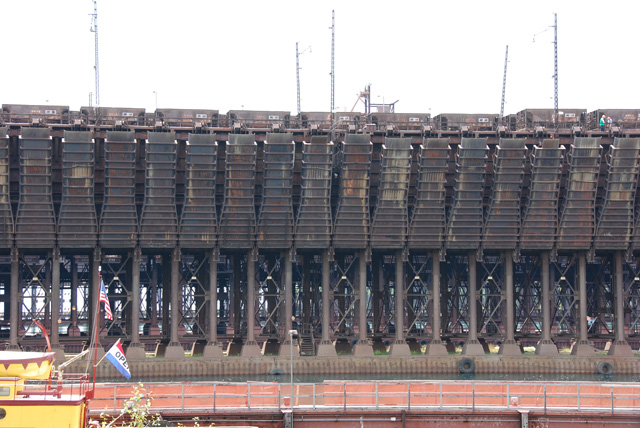 |
Two Harbors is a small village with 3 large ore docks, each double-tracked and with long yards. The tug Edna G, now retired, is now docked there and may be boarded. The docks are still operative - we were fortunate in seeing the workmen lower and raise one of the chutes. The ill-famed Edmund Fitzgerald once loaded at this dock. | 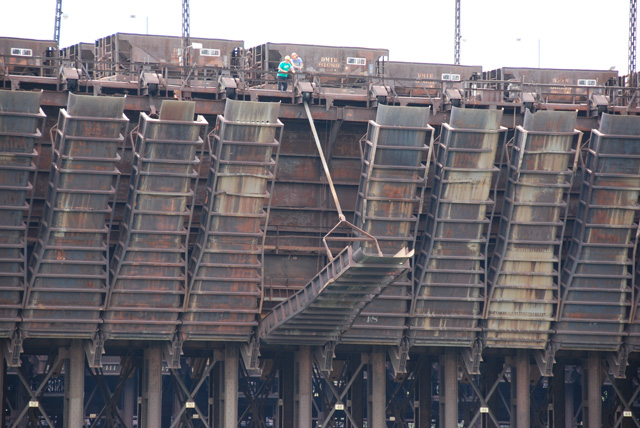 |
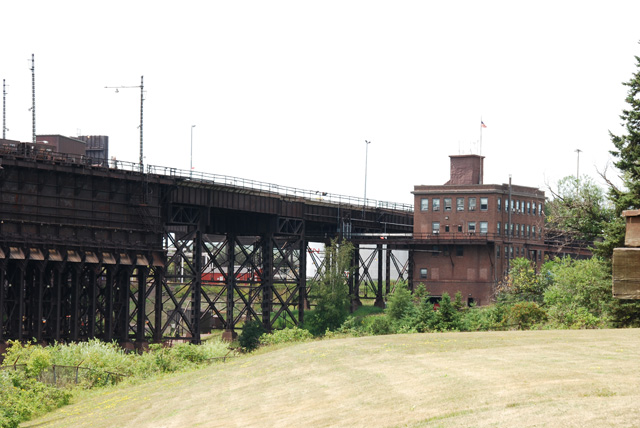 |
||
With good motels/hotels, even one in a converted brewery that was once the largest in Minnesota, and also an abundance of good restaurants, Duluth is an interesting place to visit. It is possible to tour retired ore carrier S.S. William A. Irvin and also the retired USCG buoy tender Sundew (USCG always names their buoy tenders after flowers). Also you can tour the Fitzger's Beer Museum and the StoraEnso paper mill. The nearby town of Proctor at one time hosted an extensive marshalling yard and repair facility - its worth a check to see if any traces still remain. Across the bridge in the city of Superior, Wisconsin, you can visit a classic fighter plane of WW II, a P38, at the Richard Bong museum. (For the youngsters in the audience, Bong was a World War II ace originally from Wisconsin who came to a tragic end after that war.) You can also tour the whaleback SS Meteor and the Fairlawn Mansion, and also the Old Firehouse and Police Museum. You may however wish to eschew a visit to the World of Accordions Museum. |
||
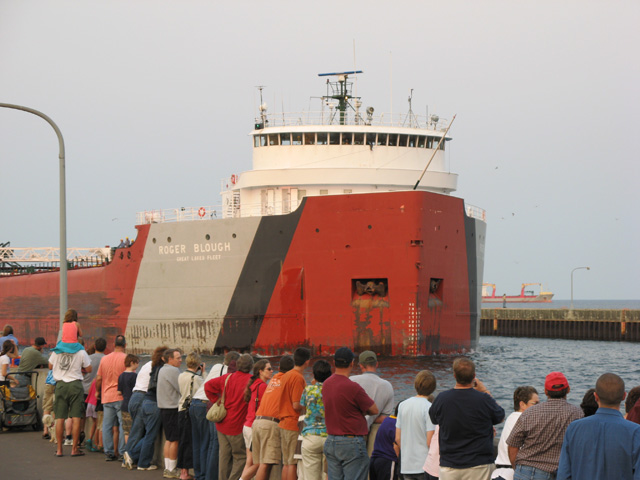 |
But watching the sun come up over Lake Superior, and rushing to the channel when a large ship enters and the lift bridge goes up, may just be reason enough to visit. This time it was the Roger Blough, US Steel's first large carrier (858 feet in length) and launched in 1972. It is a self-unloader. Later US Steel ships were 1,000 feet in length, the length being limited by the locks at Sault Ste. Marie. The Roger Blough is equipped with a bow thruster and makes short turns. | 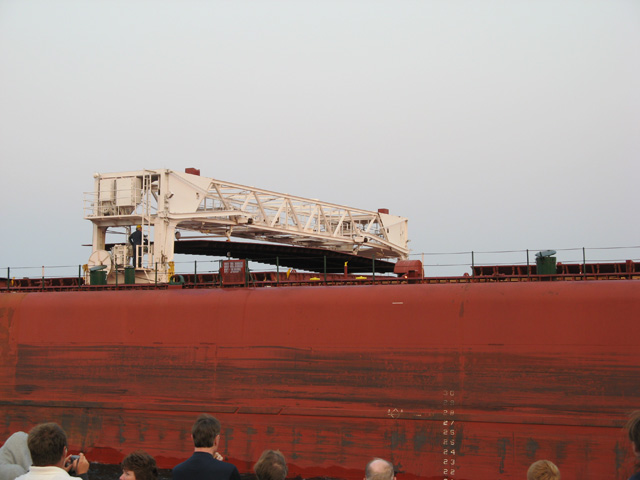 |
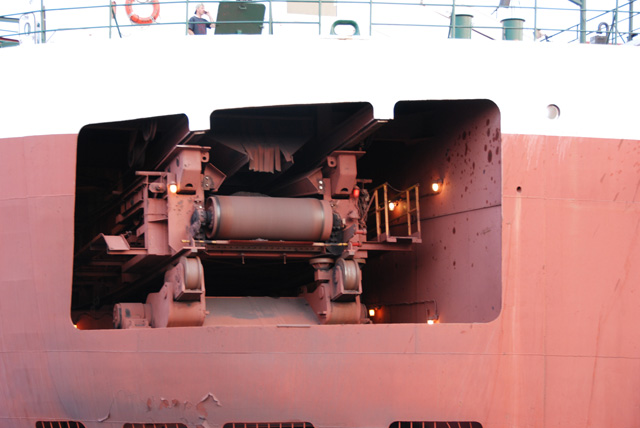 |
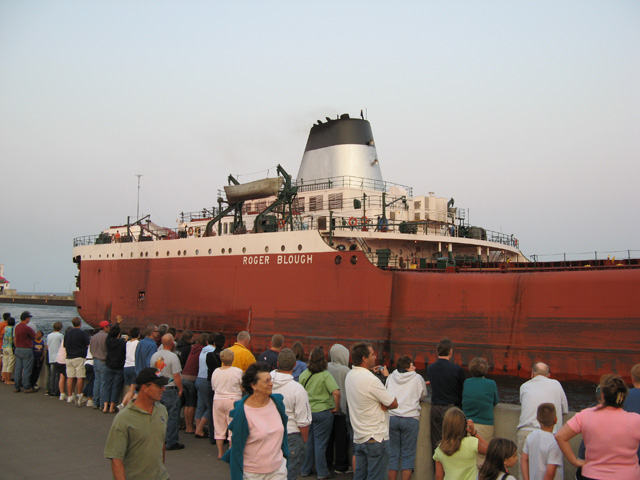 |
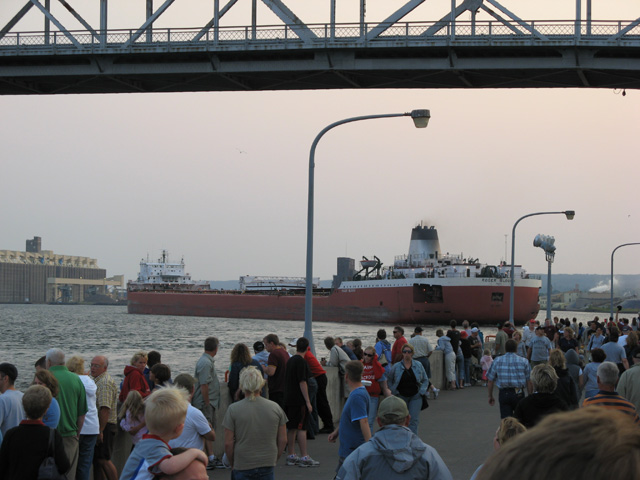 |
Shipping on the Great Lakes pretty much comes to an end around Thanksgiving and resumes around March. Winter here is cold, and while Lake Superior doesn't freeze over completely, harbors and shorelines can freeze up locally, and usually do. Hence the buoy tenders, which take the buoys in in the fall and put them out again in spring. Even in summer the weather in Duluth can be "fresh" - thats Minnesotan for darn cold by Las Vegas standards. And if you stick your toes in the lake, count them when you take them out to insure that all are present. Beaches here tend to be rocky, not sandy, so unless you are excessively hardy stick to the motel pool. For more information: "Duluth, Missabe & Iron Range Railway," by John Leopard, MBI Press |
||